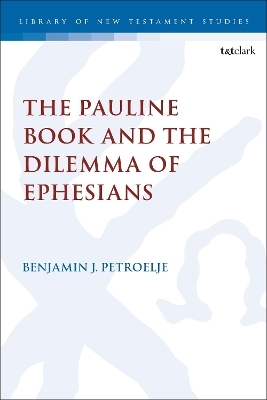
The Pauline Book and the Dilemma of Ephesians
Seiten
2024
T.& T.Clark Ltd (Verlag)
978-0-567-70375-0 (ISBN)
T.& T.Clark Ltd (Verlag)
978-0-567-70375-0 (ISBN)
Benjamin J. Petroelje argues that how one reads Ephesians is a function of deeper questions about how to read the Pauline book. Petroelje suggests the contemporary consensus—that Ephesians depicts development of/away from the “real Paul”—is largely a construct of modern criticism, rooted in shifting strategies about how to read a letter collection that developed in the 19th-century.
Using Ephesians 3:1-13 as a point of analysis, Petroelje theorizes that the text’s “image of Paul” not only anticipates recent revisionist interpretations of Paul’s Jewish identity and gentile gospel, but also holds together tensions in the collection itself surrounding these questions. By analysing ancient letter collections beside their own hermeneutical priorities, and applying this method to the late-antique and modern reception of the corpus Paulinum, Petroelje is able to historicize the origins of the split of Paul's corpus, revealing the constructed nature of the critical consensus on Ephesians and the effect that such modern reading strategies have on interpreting the letter. Urging a return to reading Ephesians alongside Pauline co-texts, Petroelje advocates for Ephesians as a crucial source for the study of Paul, whether Paul wrote it or not.
Using Ephesians 3:1-13 as a point of analysis, Petroelje theorizes that the text’s “image of Paul” not only anticipates recent revisionist interpretations of Paul’s Jewish identity and gentile gospel, but also holds together tensions in the collection itself surrounding these questions. By analysing ancient letter collections beside their own hermeneutical priorities, and applying this method to the late-antique and modern reception of the corpus Paulinum, Petroelje is able to historicize the origins of the split of Paul's corpus, revealing the constructed nature of the critical consensus on Ephesians and the effect that such modern reading strategies have on interpreting the letter. Urging a return to reading Ephesians alongside Pauline co-texts, Petroelje advocates for Ephesians as a crucial source for the study of Paul, whether Paul wrote it or not.
Benjamin Petroelje is Senior Pastor of 14th Street CRC, Holland, MI, USA, and Adjunct Professor at Western Theological Seminary.
Acknowledgements
Note on Abbreviations
Introduction
I. Reading Paul and Ephesians in Modern Criticism
Chapter One: Dismembering Paul
Chapter Two: Displacing Ephesians
II. Reading Paul and Ephesians in Late Antiquity
Chapter Three: Assembling Paul
Chapter Four: Placing Ephesians
III. Reading Ephesians among the Paulines
Chapter Five: Imaging Paul in Ephesians
Conclusion
Bibliography
Index
| Erscheinungsdatum | 05.07.2022 |
|---|---|
| Reihe/Serie | The Library of New Testament Studies |
| Verlagsort | Edinburgh |
| Sprache | englisch |
| Maße | 156 x 234 mm |
| Themenwelt | Religion / Theologie ► Christentum ► Bibelausgaben / Bibelkommentare |
| Religion / Theologie ► Christentum ► Kirchengeschichte | |
| ISBN-10 | 0-567-70375-4 / 0567703754 |
| ISBN-13 | 978-0-567-70375-0 / 9780567703750 |
| Zustand | Neuware |
| Haben Sie eine Frage zum Produkt? |
Mehr entdecken
aus dem Bereich
aus dem Bereich
Buch | Softcover (2021)
De Gruyter (Verlag)
CHF 45,90


